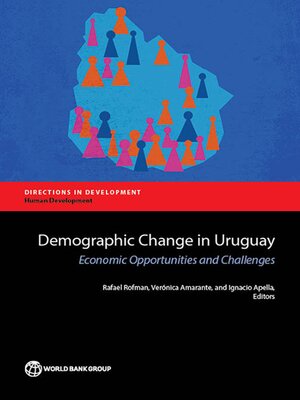Demographic Change in Uruguay
ebook ∣ Economic Opportunities and Challenges · Directions in Development--Human Development
By Rafael Rofman

Sign up to save your library
With an OverDrive account, you can save your favorite libraries for at-a-glance information about availability. Find out more about OverDrive accounts.
Find this title in Libby, the library reading app by OverDrive.



Search for a digital library with this title
Title found at these libraries:
| Library Name | Distance |
|---|---|
| Loading... |
Uruguay's population is slowly aging, driven by the demographic transition that started early in the 20th century. While this reflects significant improvements in mortality and fertility trends, it also creates important challenges for the fiscal sustainability of some social policies and for sustaining medium- and long-term economic growth. Uruguay is going through the "demographic dividend" stage of this process as the proportion of the population ages 15–65 peaks. This temporary situation creates the possibility of increasing the endowment of capital and the labor force and sparking sustained economic growth. For this to happen, institutional, financial, and fiscal conditions are needed that promote larger savings and investment. Demographic Change in Uruguay: Economic Opportunities and Challenges studies the opportunities and challenges that the demographic transition poses for Uruguay's economy. Once the demographic dividend has passed, population aging will have a significant impact on fiscal accounts, especially in social protection expenditures. This is a serious policy challenge, demanding reforms to adapt the institutions and systems to a new demographic context. The main challenge in the next few decades will be to maintain economic growth on a solid path as the working-age population declines. This will require that labor force participation rates increase, particularly among women and older people, but will also require that those in the labor market increase their productivity. This will be achieved only through sustained growth of the capital per worker ratio and the incorporation of innovations and technological developments that facilitate increased production of goods and services for the entire population.







